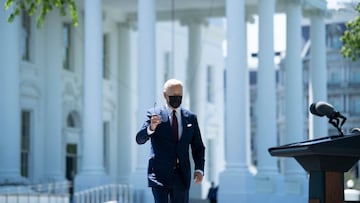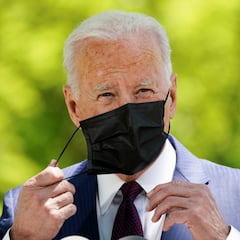What is the purpose of the State of the Union? Definition and meaning
President Joe Biden will address a joint session of Congress on Wednesday to outline his plans for the next four years and reflect on his first 100 days.


On Wednesday President Joe Biden will give his first address to Congress since taking office, a big event for a new administration in which he will attempt to set the agenda for his presidency.
Entrance for the event will be strictly invite-only with no guests allowed, a consequence of both covid-19 restrictions and additional security implemented in the aftermath of the 6 January insurrection.
The speech comes as Biden completes his first 100 days in office, unusually late for a first presidential address to Congress but the White House said that he was initially focusing on his covid-19 response. Tonight’s speech will give him the chance to update the public on his early successes and make the case for the recently unveiled $2.3 trillion American Jobs Plan.
Is this a State of the Union address?
The State of the Union speech is a tradition set forth in the Constitution, which states that president "shall from time to time give to the Congress Information of the State of the Union, and recommend to their Consideration such Measures as he shall judge necessary and expedient."
Typically this is an annual event with the president outlining plans and intentions for the upcoming year. However the first speech of each presidency is a slightly different event with the new president generally offering a more long-sighted perspective than is otherwise expected.
“We really have a once-in-a-generation opportunity right now to seize the moment ... not only create jobs but create jobs for the long haul,” says White House Communications Director Kate Bedingfield ahead of Biden’s address to Congress tonight.https://t.co/mrVyxXNd3R pic.twitter.com/vx2X8HH7gL
— New Day (@NewDay) April 28, 2021
As such, the past six presidents have all chosen to title their first address to a joint session of Congress something else. This time, House Speaker Nancy Pelosi invited Biden to the chamber to “share your vision for addressing the challenges and opportunities of this historic moment.”
However while it may not be titled a State of the Union Address, the Congressional Research Service typically classes them as the same because they “serve the same ceremonial, rhetorical, and political function as a typical State of the Union. Therefore, they are routinely counted and analyzed with the other Annual Addresses as such."
History of the State of the Union address
The earliest example of the State of the Union address comes, understandably, from the first President of the United States, George Washington. In 1790 he delivered an “Annual Message” to Congress, the shortest such speech to date at just 1,089 words.
Both Washington and his successor, President John Adams, gave their annual speech in person but President Thomas Jefferson offered his in the form of a written message instead. It remained a written message for over 100 years untill President Woodrow Wilson gave his 1913 address in person.
Before speaking to Congress on State of the Union, JFK in U.S. Capitol elevator, 1962, with Secret Service agent Jerry Behn in front: #USN pic.twitter.com/b8x28cehc6
— Michael Beschloss (@BeschlossDC) April 28, 2021
Related stories
It was Wilson who helped evolve the Annual Message in the State of the Union with a more political spin, using the platform to promote and outline his agenda. However the name “State of the Union” was not introduced until 1947, when President Harry Truman was in office.
Recent decades have seen two presidents forced to deliver their State of the Union address in more contentious situations, with both Bill Clinton and Donald Trump delivering their speeches amid their own impeachment trials.

